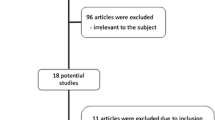Summary.
Chest trauma cases benefit to a great degree from adequate, timely initiated and consistent prehospital treatment. However, prehospital determination and evaluation of blunt chest trauma is associated with a high degree of uncertainety. The purpose of our study was to examine and determine, in a collective of 255 trauma patients, the value of additional prehospital pulse oximetric monitoring regarding the optimization of the emergency physician's diagnosis and treatment of blunt chest trauma. We conclude from our findings that, in addition to the physical examination, with the application of pulse oximetry the prehospital diagnosis of lung contusion as well as the early detection of tension pneumothorax are more accurate. Therefore, the combination of physical examination and pulse oximetric monitoring is a requirement for the optimization of prehospital diagnosis and therapy in blunt chest trauma.
Zusammenfassung.
Thoraxtraumatisierte profitieren in besonderem Maße von einer adäquaten, zeitgerecht initiierten und konsequent fortgeführten notärztlichen Therapie. Gerade aber beim stumpfen Thoraxtrauma ist die präklinische Beurteilung der Verletzungsschwere mit einem hohen Grad an Unsicherheit verbunden. Ziel der vorliegenden Studie war es, an einem Kollektiv von 255 Patienten den Nutzen eines adjuvanten präklinischen pulsoxymetrischen Monitorings hinsichtlich einer Optimierung der notärztlichen Diagnostik sowie Therapie beim stumpfen Thoraxtrauma zu untersuchen. Die Ergebnisse dieser Untersuchung lassen den Schluß zu, daß die Pulsoxymetrie in Ergänzung zu der rein klinischen Beurteilung des Notfallpatienten eine wertvolle Hilfestellung bei der notärztlichen Diagnostik der Lungenkontusion sowie bei der Detektion eines Spannungspneumothorax leistet. Die Kombination von klinischer Untersuchung und pulsoxymetrischem Monitoring erlaubt demnach bereits präklinisch eine deutlich differenziertere notärztliche Diagnostik des stumpfen Thoraxtraumas, als dies bisher möglich war und schafft die Voraussetzungen für eine Optimierung der präklinischen Therapie.
Similar content being viewed by others
Author information
Authors and Affiliations
Rights and permissions
About this article
Cite this article
Helm, M., Hauke, J., Eßer, M. et al. Notärztliche Diagnostik bei stumpfem Thoraxtrauma Nutzen eines kontinuierlichen pulsoxymetrischen Monitorings. Chirurg 68, 606–612 (1997). https://doi.org/10.1007/s001040050239
Issue Date:
DOI: https://doi.org/10.1007/s001040050239




